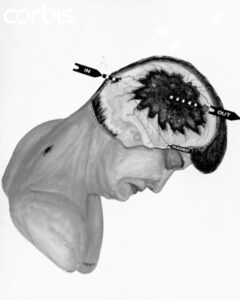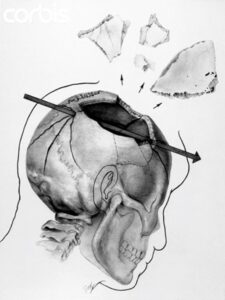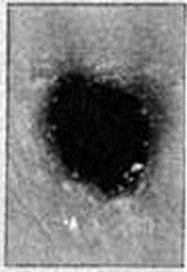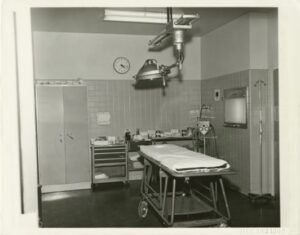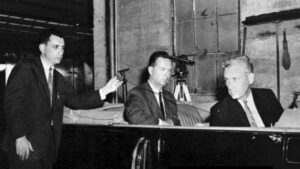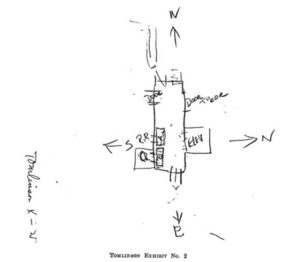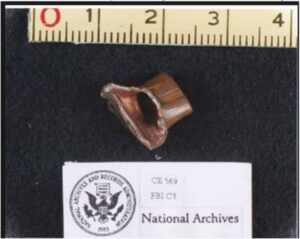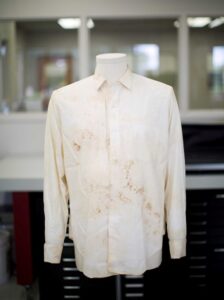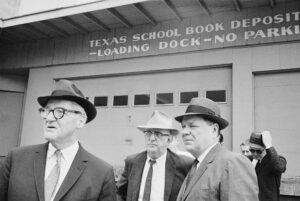By Donald B. Thomas, 1 July, 2024
Cyril Wecht passed away last month; he was 93. He was a heroic figure, and I am proud to have known him. Cyril Wecht, M.D., J.D., was one of our nation’s leading forensic pathologists. He was the medical examiner for Allegheny County (Pittsburgh), but more than a coroner he was a scientist. He was president of the American Academy of Forensic Scientists. He published more than 600 papers on criminal forensics and was the long-time editor for the International Journal for Forensic Pathology. The Cyril H. Wecht Institute for Forensic Science and Law was established at Duquesne University in his honor. Known as the celebrity coroner, he was consulted on dozens of notorious wrongful death cases, the most famous of which was the Kennedy assassination. His obituary in the New York Times had this to say,
“Dr. Wecht was much more than a celebrity coroner. He was widely regarded as one of the leading forensic pathologists of the last century. In many people’s view, he was the person most responsible for modernizing the field and ensuring its place at the center of the American justice system.”
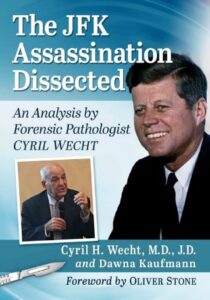 Dr. Wecht served on the Forensic Pathology Panel that reviewed the JFK autopsy for the House Select Committee on Assassinations. He was a co-founder of CAPA, Citizens Against Political Assassinations.
Dr. Wecht served on the Forensic Pathology Panel that reviewed the JFK autopsy for the House Select Committee on Assassinations. He was a co-founder of CAPA, Citizens Against Political Assassinations.
Dr. Wecht knew better than anyone how botched JFK’s autopsy was. He used to say that a bowery bum would have gotten a better autopsy. By law Kennedy’s death should have been the subject of an official coroner’s inquest in Texas where he was killed, and in fact, the Dallas County coroner was on standby. He was literally tossed aside by Secret Service agents when he tried to stop them from absconding with the corpus delecti. It was on Air Force One returning to the Capitol in Washington that the decision was made to have an autopsy performed at Bethesda Naval Hospital, more for reasons of security than the best interests of a criminal prosecution.
Gathering evidence for a murder should have included a medico-legal autopsy performed by a forensic pathologist. Instead, the task was assigned to the head of the pathology department at Bethesda, Dr. James Humes. A poorer choice is difficult to imagine. Not only was Humes not qualified in forensic pathology, neither was he a practicing clinical pathologist. A desk bound bureaucrat; he had never performed an autopsy in his tenure at Bethesda. He didn’t even know enough to understand how unsuited he was. Michael Baden, the chair of the Forensic Pathology Panel for the HSCA characterized Humes’ work as “The exemplar of a bungled autopsy.”
For starters, the vast majority of weapon involved crimes are committed with handguns. When a victim is shot in the head by a handgun in almost all cases the bullet will be found in the braincase. That is because handgun ammunition does not have enough power to penetrate a human skull twice. Hence the wound in the victim’s head is by default the entrance wound. Rifle ammunition in contrast is so powerful that a human skull does not so contain; the bullet inevitably passes through leaving an entrance and exit wound. Except that high powered rounds don’t make a round definition bullet hole. They strike with such force that the bone is shattered on entrance and exit. Worse, the cavitational pressure causes the cranium to burst open, blowing the brains out.
The Warren Commission (James Humes) and the HSCA (Michael Baden) version of the entrance and path of the fatal bullet. Neither version is consistent with the autopsy films and x-rays.
The Warren Commission (James Humes) and the HSCA (Michael Baden) version of the entrance and path of the fatal bullet. Neither version is consistent with the autopsy films and x-rays.
President Kennedy experienced a typical high-powered rifle shot injury to his head. Bone shards and brain matter were scattered all over the interior of the limousine (and on Mrs. Kennedy). It would have been a challenge for a trained forensic pathologist to reconstruct the skull like a jigsaw puzzle to determine the path of the bullet, but that was never done. Humes was clueless. Worse, medical personnel photographed the wounds and doubtless Humes was expecting to have those materials available when he wrote the autopsy report. Instead, the Secret Service confiscated the films and Humes was forced to write his account from memory. Now that the films have been made available to experts like Dr. Wecht, we can see that Humes’ memory was deficient. Humes “remembered” that the President had a “through-and-through” bullet hole in the occipital bone, which is in the back at the base of the skull. The photographs and x-rays fail to show a bullet hole anywhere in the skull. The x-rays do show a track of bullet dust, lead fragments traversing the cranial space, near the top of the head.
The failure to define the head wound aside, it is the misrepresentation of the President’s torso wounds that most offended Wecht. It was the Warren Commission’s staff, specifically Junior Counsel, and future senator from his home state of Pennsylvania, Arlen Specter, who exploited the incompetent autopsy in furtherance of the lone nut version of the crime. That version relied on the bizarre flight of Commission Exhibit 399, the magic bullet. This was the subject that most animated Cyril. He would pound on the podium; his eyes ablaze he would shout to the heavens. His anger was palpable. On three separate occasions, a decade apart, the Wecht Institute sponsored symposia on the forensics of the JFK assassination at which he expounded on the subject. At his invitation I shared the podium on those occasions, so I am able to relate the gist of the matter.
CE-399 was found on a stretcher at Parkland Hospital in Dallas where President Kennedy died in the emergency room, or at least where he was declared dead. It was placed in a small brown envelope and tossed into the coffin before the Secret Service carried him away. It was discovered by the autopsy staff at Bethesda when they lifted the body out of the coffin. Of course, this event was kept secret by Humes and the Warren Commission (i.e. Specter). The staff of both hospitals were under gag orders until 1978 when the HSCA, with Dr. Wecht as a consulting expert, reexamined the case.
The autopsy on that night in November, 1963, was riddled with errors. In examining the body Humes discovered that JFK had a bullet hole in his upper back at the base of his neck. This wound was duly photographed by the attendant. An x-ray was taken of the upper thorax and no bullets were seen in the body cavity. Naturally, Humes connected the loose bullet in the coffin with the wound in the back. The FBI agents present at the autopsy reported thusly,
“This opening was probed by Dr. HUMES with the finger…”
And, “Further probing determined that the distance traveled by this missile was a short distance inasmuch as the end of the opening could be felt with the finger.”
Autopsy photo showing the bullet hole in the upper back at the base of the neck.
Probing the hole first with his finger and then with a metal rod, Humes concluded that the wound was shallow and thus the bullet must have stopped in the back and then fallen out perhaps during efforts at resuscitation. A forensic pathologist schooled in ballistics would have known that full-jacketed rifle bullets don’t just stop in the body unless they strike heavy bone or a dense organ like the liver, and then they would be deformed, mushroomed or broken. CE-399 is an integral full metal jacket bullet. Even the striations from the rifling are uneffaced.
 A forensic pathologist would have known that having entered the flesh bullets don’t fall out, and that one cannot probe a bullet wound to determine the track. Especially in a deceased victim, the blood and tissue fluids will essentially glue the track shut. The only way to determine the bullet track is to dissect it. That was not done. At least one of the surgeons at the autopsy, an army doctor, Pierre Finck, knew that dissecting the wound was necessary and would testify that he urged that it be done. And on that point he further testified,
A forensic pathologist would have known that having entered the flesh bullets don’t fall out, and that one cannot probe a bullet wound to determine the track. Especially in a deceased victim, the blood and tissue fluids will essentially glue the track shut. The only way to determine the bullet track is to dissect it. That was not done. At least one of the surgeons at the autopsy, an army doctor, Pierre Finck, knew that dissecting the wound was necessary and would testify that he urged that it be done. And on that point he further testified,
“As I recall, I was told not to, but I don’t recall by whom.”
The witness accounts differ but at some point, late that night, Humes spoke by telephone with Dr. Malcolm Perry the trauma room doctor who attended the President in Dallas. Humes wanted to know if the bullet was found during resuscitation. Perry knew nothing about a bullet. Instead, Perry provided the news that JFK had a bullet hole in his throat through the larynx (just below the adams apple) and that it appeared to be an entrance wound. On account of the President’s agonized breathing, he, Perry, had installed a tracheostome, properly making the incision for the cuff through the bullet hole in the larynx.
At some point one would think that Humes would have made the connection between the bullet hole in the throat and the bullet hole in the back, both at the level of the 7th cervical vertebra, and the lack of a bullet in the x-ray of the upper thorax. Yet, in an interview of the autopsy doctors published by the Journal of the American Medical Association in early January 1964, the Bethesda doctors were still under the delusion that CE-399 had fallen out the back, and the wound in the throat was caused by egress of a stray fragment from the head wound.
Transcripts of the Warren Commission deliberations in executive session in late January, before the hearings began, reveal discussion of the conflicts in the medical evidence that needed to be resolved. The minutes of the meeting have Chief Counsel J. Lee Rankin explaining,
“There is a great range of material in regard to the wounds, and the autopsy and this point of exit or entrance of the bullet in the front of the neck, and that all has to be developed much more than we have at the present time. We have an explanation there in the autopsy that probably a fragment came out the front of the neck.”
Given that there is no such “explanation” in the official autopsy report ultimately published by the Warren Commission, Dr. Wecht was among the first researchers to suspect that the official report was altered to fit the official conclusion. There is little doubt as to the Warren Commission official responsible.
Arlen Specter had a problem. It was his task to present the crime scene evidence for the Warren Report in a manner consistent with only one shooter being involved. The gunshot wounds of the victims had to be connected to the murder weapon and each wounding accounted for by the actions of the lone assassin in the sequence of events at the crime scene.
 The [alleged] murder weapon, a Mannlicher-Carcano rifle, was found on the sixth floor of the Book Depository building overlooking the motorcade route. Tests by the Army with Oswald’s rifle established the cycle time, the time required to fire, reload with the bolt action, and fire again, as 2-1/4 sec. Three expended Carcano cartridge cases were found on the floor next to the window where witnesses had seen the gunman. A live round was still in the weapon. Circumstantially it appeared that three shots had been fired. But there were four wounds to be accounted for: President Kennedy shot in the head and base of the neck, Governor Connally shot through the chest, and a bystander in the crowd struck in the face by shrapnel from a shot that struck the pavement.
The [alleged] murder weapon, a Mannlicher-Carcano rifle, was found on the sixth floor of the Book Depository building overlooking the motorcade route. Tests by the Army with Oswald’s rifle established the cycle time, the time required to fire, reload with the bolt action, and fire again, as 2-1/4 sec. Three expended Carcano cartridge cases were found on the floor next to the window where witnesses had seen the gunman. A live round was still in the weapon. Circumstantially it appeared that three shots had been fired. But there were four wounds to be accounted for: President Kennedy shot in the head and base of the neck, Governor Connally shot through the chest, and a bystander in the crowd struck in the face by shrapnel from a shot that struck the pavement.
The Zapruder film record was another issue. The time lapse for the sequence of wounding was only six seconds, leaving time for only three shots. For a brief moment the president’s limousine passed behind a freeway sign. Just before passing out of view Kennedy reacted to being wounded. When the limousine passengers come back into view from behind the sign Governor Connally reacts to being wounded.
Specter took advantage of misleading evidence in the form of a photograph taken by a bystander named Phil Willis. Willis testified that while he was aiming his camera at the President, he was startled into depressing the button by the sudden blast of a gunshot. The Warren Report version, written by Specter, correlated the Willis photo to the moment when the President was out of view behind the freeway sign, stating falsely that when he appears out from behind the sign he is seen, according to Specter, “clutching at his throat wound.” The woundings are too close together for both reactions to be accounted for by separate gunshots from Oswald’s rifle. It is now realized from photogrammetric analysis that Willis’ reaction correlates to the second shot, not the first.
By this sleight of hand, it was made to seem that Kennedy and Connally were wounded almost simultaneously, setting the stage for the magic bullet theory. Only when the Zapruder film was made available to the public could we see that Kennedy reacted much earlier, that he never clutched at his throat wound, that the Willis photo did not correlate to the Freeway sign alignment and the fatal bullet at Z-frame-313 drove Kennedy’s head rearward, evidencing a shot coming from the front.
Misrepresenting the events in the Zapruder film was only his first step. Specter’s next problem was to construct a role for the intact bullet, CE-399. When the Warren Commission began its deliberations in early 1964, they, like the rest of the country, were under the impression that a bullet from the murder weapon had been recovered from JFK’s body. When the truth, that the bullet was found on a stretcher at the hospital came out at the hearings, Commissioner Allen Dulles asked for clarification and Specter replied,
“There has been other evidence, Mr. Dulles. If I may say at this point, we shall produce later, subject to sequential proof, evidence that the stretcher on which the bullet was found was the stretcher of Governor Connally.”
Informed that the bullet in the casket had been found on a stretcher at Parkland Hospital it was natural for the autopsy doctors to assume that the stretcher was the one used for the President. But CE-399 was absolutely not found on Kennedy’s gurney. The ER doctors knew that the President was deceased, thus they never moved his body off the gurney. The President remained on the gurney until he was moved to the morgue, and from there to the casket, well after CE-399 mysteriously appeared on a different gurney in the hallway.
The solution was obvious, given that Connally was seated directly in front of Kennedy, less than two feet of space between them. The bullet entering at the back and passing out of Kennedy’s throat could have entered Connally’s chest. The solution was eminently plausible if one associated the Governor’s chest, thigh and wrist wounds with the bullet fragments (CE-567 & 569) found on the floor and seats in front of Connally’s position in the limo.
The story of Commission Exhibit 399 begins with its discoverer, a hospital engineer named Darrell Tomlinson. At approximately 1:30 pm, while President Kennedy in trauma room one and Governor Connally in trauma room two, were being attended to, Tomlinson found a wheeled gurney on the hospital elevator. He moved the gurney from the elevator into the hallway of the ground floor where another stretcher was already parked. Tomlinson provided investigators with a sketch showing the juxtaposition of the two gurneys in the hallway between the restrooms (R.R.) and the elevator.
On subsequently returning to the hallway about 15 min later, Tomlinson found that one of the stretchers had been moved and was now blocking the hallway. Presumably it had been moved by someone needing access to the restroom. In any event, Tomlinson, in pushing the gurney back against the wall heard a “clink” and then saw the bullet lying between the mattress pad and the metal frame. Importantly, the contemporaneous secret service report states that Tomlinson described the stretcher to them as having “rubber gloves, a stethoscope, and other doctor’s paraphernalia.”

Double Doors at the end of the hallway is the ambulance entrance. The open hallway to the left leads to the elevator and the rest rooms where the bullet was found on the gurney.
According to the chain of custody documented by the FBI, the bullet was acquired by Secret Service Agent Richard Johnsen and that Johnsen carried the bullet to Washington when he flew back that afternoon, arriving around 7:30 pm, forwarding custody of the bullet to the head of the Secret Service James Rowley. Rowley then turned the bullet over to FBI agent Elmer Todd who delivered it to Robert Frazier, ballistic expert at the FBI’s lab in Washington.
This chain of custody, as recorded in an FBI document dated June 1964, is a fabrication. Firstly, when researchers interviewed Agent Johnsen he denied that he carried the bullet to Washington. Secondly, we know that the bullet was actually tossed into the President’s casket, inside the little brown envelope that Parkland Hospital used for evidence bullets on the all too frequent occasions when gunshot victims wound up in their trauma rooms.
When the acquisitioned casket arrived at Bethesda Naval Hospital for the autopsy the President’s unclothed body wrapped in sheets was lifted out. As it was positioned over the metal table, “kerplunk,” the bullet fell out of the shroud onto the table. Because the Naval personnel attending the autopsy were under an official gag order, it was not until 1978 that we learned of this event. Captain David Osborne, chief of surgery, not only heard the bullet strike the table, he held the bullet in his hand and described it to investigators as an “intact bullet,” and “not damaged in any way.” Admiral Osborne would later hold the position of Deputy Surgeon General of the United States. FBI agents observing the autopsy then wrote and signed a receipt addressed to Commander R.H. Stover, the head of the Pathology Department and also a witness at the autopsy. Withheld by the Warren Commission, it reads,
“We hereby acknowledge receipt for a missile removed by Commander James J. Humes, MC, USN on this date.”
Commander Stover when interviewed by researchers confirmed that the “missile” named in the receipt was a whole bullet and moreover that it was in a small brown envelope. Which is a critical detail because in his memorandum documenting the custody of the bullet Secret Service head Rowley wrote that he gave the bullet to agent Todd “… enclosed in an envelope.” Thus, CE-399 was in the casket aboard Air Force One on the way to Washington, not in Agent Johnsen’s pocket. The concocted chain of custody served to conceal the missteps taken by the investigation, and worse, malfeasance by the FBI in their handling of the evidence.
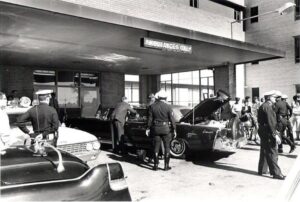
Hapless secret service agents, perhaps out of shame, obtained a bucket and began washing off the blood and gore on the limo, destroying evidence that might have been derived from a blood spatter analysis.
As for Specter, no “sequential proof” ever established a connection between CE-399 and Connally’s stretcher. On the contrary. The trauma room nurse, Jane Wester, insisted that she removed all instruments and paraphernalia from Connally’s stretcher first and then placed the sheets in the linen hampers. The ER orderly, R.J. Jimison, corroborated Wester when he testified that the stretcher was bare when he pushed it out of the trauma room. Specter neglected to inform the Warren Commissioners about Jimison or Wester or the stethoscope issue.
At the hearing where Tomlinson testified before the Commission Specter made a shell game of the stretchers to make it look like there was some doubt about which gurney held the bullet. He began by asking Tomlinson to label the stretchers in his diagram as A and B and then began the questioning,
“… at the time we started our discussion, it was your recollection at that point that the bullet came off stretcher “A,” was it not?”
Tomlinson: “B”
Specter: “Pardon me, stretcher “B” but it was stretcher “A” that you took off of the elevator?”
Specter exploited Tomlinson’s uncertainty as to which of the two stretchers came off of the elevator to make it look like there was doubt about which stretcher had the bullet. At no point did the subject of the stethoscope come up. Finally, in frustration, Tomlinson broke off Specter’s effort to make him look like a fool.
“Here’s the deal … I rolled that thing off, we got a call and went to the Second floor … I don’t know how many people hit them … I don’t know anything about what could have happened to them in between the time I was gone, and I made several trips before I discovered the bullet on the end of it there.”
Specter also kept from the Commission the fact that other witnesses were present when the bullet was discovered. One was the Personnel Director of Security, Mr. O.P. Wright. Wright was called over by Tomlinson to witness the discovery of the bullet. It was Wright who actually lifted the bullet off of the stretcher and handed it to Secret Service agent Richard Johnsen. Johnsen wrote the note that the bullet was found on a stretcher with a stethoscope.
 So, the pertinent question is, if the gurney was not used by Kennedy or Connally, whose blood was on the stretcher with the bullet? The best answer to that question was determined by Josiah Thompson. Filling in where Specter and the Warren Commission failed, Thompson reviewed the hospital records and interviewed the emergency room staff. While the trauma rooms were occupied and trauma surgeons preoccupied, an infant boy named Ronnie Fuller was brought into the ER bleeding profusely from a cut on his face, having fallen on some broken glass. Logged in at 12:54 p.m., the boy was placed on a gurney where he was examined by nurses, one of whom, Era Lumpkin, lost track of her stethoscope. The gurney was left in the hallway between the trauma room entrance and the vestibule next to the elevator where the bullet was found by Tomlinson around 1:45 pm.
So, the pertinent question is, if the gurney was not used by Kennedy or Connally, whose blood was on the stretcher with the bullet? The best answer to that question was determined by Josiah Thompson. Filling in where Specter and the Warren Commission failed, Thompson reviewed the hospital records and interviewed the emergency room staff. While the trauma rooms were occupied and trauma surgeons preoccupied, an infant boy named Ronnie Fuller was brought into the ER bleeding profusely from a cut on his face, having fallen on some broken glass. Logged in at 12:54 p.m., the boy was placed on a gurney where he was examined by nurses, one of whom, Era Lumpkin, lost track of her stethoscope. The gurney was left in the hallway between the trauma room entrance and the vestibule next to the elevator where the bullet was found by Tomlinson around 1:45 pm.
Hence, the circumstantial evidence indicates that CE-399, a bullet matched to the murder weapon, was planted by someone who wanted it found and entered into evidence. In the latest development, one of the President’s Secret Service agents, Paul Landis, in 2023, claimed that it was he who planted the bullet on the gurney! Landis further asserted that he found the bullet on the back seat of the limousine while it was parked at the emergency entrance at Parkland Hospital.

Paul Landis (right) surviving secret service agent with the Dallas motorcade. June 2023. With his ghost-writer and spokesperson, James Robenalt.
I was sitting next to my friend Josiah Thompson when Landis repeated this claim at the symposium in Pittsburgh. Josiah turned to me and said,
“There is no scenario by which that bullet could have been on the seat of the limo.”
And then, to his great credit, Cyril Wecht, in his wheelchair and at his insistence, was brought up on stage, seated next to Landis, and given a microphone. He then explained to Mr. Landis that no, bullets do not fall out of bodies, and President Kennedy did not have a wound from which a bullet like CE-399 could have fallen. Paul Landis only smiled.
Old-timers disease had crept up on Mr. Landis, and in the spirit of my friend Cyril, I gave the old fellow a friendly pat on the shoulder and shook his hand and did not remind him that two decades ago when he was interviewed by researchers, he stated that he found a bullet fragment in the limo, not a whole bullet. For the record, his spokesman James Robenalt maintains that Landis was misquoted in that interview.
CE-567 and CE-569 the bullet fragments found in the limo after the shooting.
Critics such as I insist that CE-399 was planted on the gurney yet reject Landis’ belated claim that he planted it. The circumstances point to the FBI, for reasons akin to why they falsified the chain of custody. But those suspicions and circumstances aside, the fact remains, and the point of Cyril Wecht’s critique is, that CE-399 does not account for Governor Connally’s wounds no matter on whose stretcher it was found.
 Ballistic and metallurgical tests indicated a broken bullet had exited Governor Connally. At the Warren Commission’s behest, the U.S. Army Weapons Testing Branch conducted ballistics tests with the Carcano ammunition. When they fired the bullets into the ribcage of goats, the bullets always deformed. On the theory that the bullet would have slowed down if it first went through JFK, they fired the bullets through a 6-inch-thick piece of horsemeat on its way to the goat ribs. Still the bullets always deformed. In an admirable effort to attain empirical results they tested a range of impact velocities. They found that the deformation velocity of the Carcano bullet on striking bone straight on was 1400 feet per sec. On striking sideways, as might a tumbling bullet, the deformation velocity went down to 1100 feet per sec. In fact, Governor Connally’s back wound scar was elongated, consistent with a tumbling bullet. At the wounding distance of 180 ft the horsemeat slowed the bullet from 1900 feet per sec to 1800 feet per sec, well above deformation velocity. These results were ignored by Specter, and are still ignored or misrepresented by Warren Commission defenders to this very day.
Ballistic and metallurgical tests indicated a broken bullet had exited Governor Connally. At the Warren Commission’s behest, the U.S. Army Weapons Testing Branch conducted ballistics tests with the Carcano ammunition. When they fired the bullets into the ribcage of goats, the bullets always deformed. On the theory that the bullet would have slowed down if it first went through JFK, they fired the bullets through a 6-inch-thick piece of horsemeat on its way to the goat ribs. Still the bullets always deformed. In an admirable effort to attain empirical results they tested a range of impact velocities. They found that the deformation velocity of the Carcano bullet on striking bone straight on was 1400 feet per sec. On striking sideways, as might a tumbling bullet, the deformation velocity went down to 1100 feet per sec. In fact, Governor Connally’s back wound scar was elongated, consistent with a tumbling bullet. At the wounding distance of 180 ft the horsemeat slowed the bullet from 1900 feet per sec to 1800 feet per sec, well above deformation velocity. These results were ignored by Specter, and are still ignored or misrepresented by Warren Commission defenders to this very day.
Governor Connally was struck in the back just to the left of his right armpit shattering 10 cm of his fifth rib. The bullet exited just below the nipple leaving a large sucking wound. The lung collapsed. The bullet striking the rib sideways separated the lead core from the copper alloy jacket, eventually coming to rest on the floor of the limousine. Two vertical slits were torn in the Governors shirt by their exit. One fragment struck his thigh while the other ripped into his wrist breaking his radial bone (see x-ray above). Fragments of metal went through and exited the wrist while some remained inside. Other metal fragments were left in his thigh and chest. Mohair fibers from the jacket sleeve were carried into the wrist wound. Connally’s life was saved by the skills of the emergency room doctor Red Duke (good on your dad Sarah!).

The governor’s clothing was removed in preparation for surgery. The clothing was then taken by Texas officials and laundered prior to forensic testing. Another example of top-notch performance by law enforcement on the scene.
As implausible as the magic bullet scenario was, without the magic bullet scenario, there had to have been more than one shooter, which was anathema to the objectives of Specter and the Commission. As a critical member of the HSCA Forensic Pathology Panel in 1978 Dr. Wecht urged that modern forensics be brought to bear on the issue. Thus, another member, Dr. Charles Petty (a forensic expert at the Southwestern Institute of Forensic Science in Dallas) performed a dispersive X-ray spectrographic analysis on the bullet holes in the Governor’s clothing. The results, which identify the presence of bullet wipe, were informative. The entrance wound in the back of the jacket and shirt had insignificant amounts of lead. But the shirt front and cuff, in addition to iron from the blood, had an order of magnitude more lead than in the controls (the shirt collar). Clearly the lead core was exposed when the bullet exited his chest.
In sum then, there is not a shred of evidence that CE-399 had caused anyone’s wounds. The Warren Commission’s insistence that an intact bullet could have exited the Governors wounds is contrary to the empirical evidence on deformation velocity. The lands and grooves that enabled a ballistic determination that CE-399 had been fired through Oswald’s Carcano rifle, were not even effaced. There was never any evidence that CE-399 was found on a gurney used by either Connally or Kennedy. The available evidence, in spite of the falsified chain of custody, is that it did not. The magic bullet theory was a construct tailored to fit the one gunman imperative.
Following publication of the Warren Report, FBI Director J. Edgar Hoover wrote a stern letter to Earl Warren advising that the magic bullet theory was directly contrary to the findings of the FBI laboratory. When Specter’s machinations were revealed in the years following its release, half of the Warren Commissioners renounced the Warren Report. Personal animus was not a flaw that one would find in Cyril Wecht and thus it is not too surprising that he and Arlen Specter were lifelong friends despite their opposing views.
The magic bullet theory remains controversial when it should not be. Its defenders are in denial that it has been debunked and they will likely never admit otherwise because the lone nut theory depends on it. But on the conspiracy side of the ledger there are those equally stubborn in denying the science advocated by Dr. Wecht. To be sure, in a publication co-authored by Wecht along with Gary Aguilar and Rex Bradford*, it was made clear that,
“Much additional work remains to be done … if we are ever to achieve a satisfactory understanding of JFK’s injuries and the implications they entail.”
And while we may not know everything, we do know some things, or at least Cyril Wecht knew and helped establish these facts through his expertise.
- CE-399 does not and cannot account for Governor Connally’s wounds.
- The lesion in President Kennedy’s upper back at the base of the neck is a bullet entrance wound (not an exit wound).
I would further add from my perspective that those conclusions are concretely supported by the acoustical evidence. Those who advocate that Cyril Wecht was wrong on either of these points need to seriously reconsider the evidence and the conclusions that derive. And if I know Cyril he will not rest in peace until they do.
Acknowledgement: I wish to thank Dr. Gary Aguilar for comments on a draft of this manuscript. Any errors remaining are entirely my own.
*Aguilar, G., C. Wecht & R. Bradford. 2005. A Neuroforensic Analysis of the Wounds of President John F. Kennedy. Neurosurgery 57(3): 1-16.[Dr. Donald B. Thomas is a board member of the AARC. He is the author or co-author of more than one hundred scientific journal articles, book chapters and books. His 2001 article in the journal Science & Justice, The Acoustical Evidence in the Kennedy Assassination Revisited led to publication of Hear no Evil, a book which places the acoustical evidence in a larger context. He currently resides in Texas with his family.]



